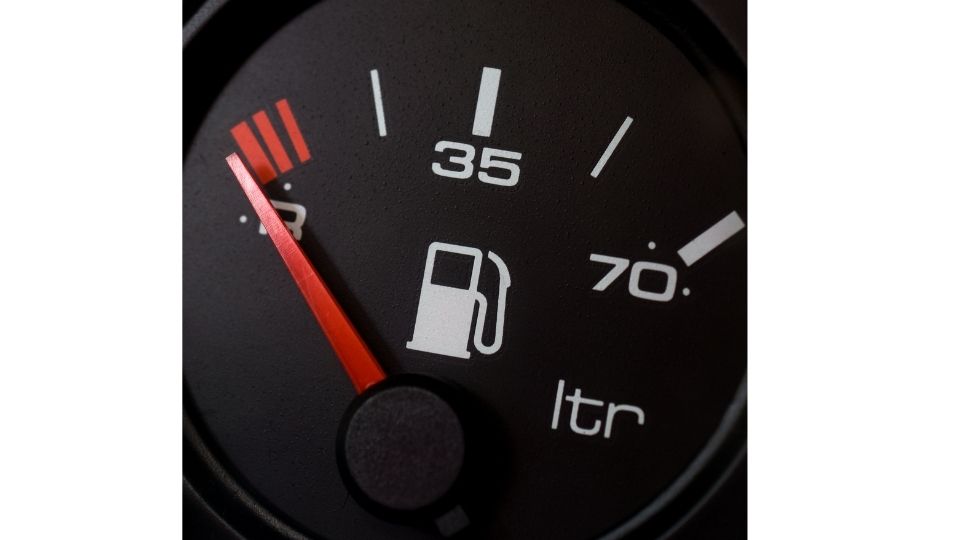Some can go as far as thirty-twenty miles, while others can hit seventy miles. The distance you can drive on an empty tank depends on the car you’re driving, the road condition, and the speed you’re moving.
However, there’s no accurate way of determining the distance you can go with the zero display unless you try it out on your car. Driving a car with no gas is not always a good idea.
However, it’s good to know the number of miles your vehicle can reach in zero miles in the face of a daunting situation. It helps you to avoid being stuck or a car breakdown. Here are some insights on drive-on-empty.
How Far Can You Go on 0 Miles to Empty?
In short, on average you can go 15 miles before finding your first gas station. However, this is not to say that you will never run out of gas, this will vary greatly from vehicle to vehicle and the fuel efficiency system used but the typical range is 5-25 miles.
Is It Risky to Drive When Your Car Says 0 Miles?
Primarily, drivers’ concern when driving on an empty tank is the risk of running out of gas and getting stuck in the middle of nowhere or on a highway with another car right behind you. Moreover, driving on empty may damage your car’s catalytic converter, which may be costly since you need to repair or replace it.
Driving-on-empty usually damages your vehicle pump. How? The natural fuel debris settling at its bottom gets sucked up by your pump hence damaging it. In fact, driving on low fuel damages it too.
This fact is why your tank must be at least ¼ full while going. However, for the first time or in case of emergencies, you can’t harm it unless you make it a regular habit. Unless completely necessary, like if you’ve forgotten your wallet or there’s no gas station nearby, don’t drive once you receive the zero mark indicator. You are risking the engine sucking up impurities which is a costly risk.
How Accurate Is Miles-to-Empty?
Unfortunately, according to A.A.A, the car systems may not be perfect because they have a slight error ranging from 6.4-percent to 2.8-percent. Hence if you run your vehicle to the last drop, it may splutter sooner than you expect. Hence, if you want to prevent gas run out, be sure to always fill your gas gauge into a quarter tank.
Filling it this way helps ensure the driver has sufficient fuel in case of an unplanned delay. It also prevents damaging your fuel pump. A good number of drivers rely on the miles-to-empty in determining the time to refill their gas. On the other hand, others believe the vehicles’ estimates are inaccurate. However, you can trust the forecast or your driving experience in determining when to refill.
How Trustworthy Is My Miles-to-Empty Gauge?
Many modern vehicles have the Miles-to-empty gauge in the instrument cluster displaying the total mileage you can drive before your car runs out of gas. Some drivers prefer using it instead of the warning fuel light.
It’s a nice feature though it’s dangerous to entirely depend on it because it displays an approximation and not the actual distance.
Its estimates use the average of the miles you’ve driven; hence it may not be very trustworthy. For instance, when you’re on a highway, stuck in traffic, and your engine is running, the gauge estimates how many miles you’ve covered. Hence it may read you have a full tank while you’re actually on an empty tank.
Does Cruise Control Save Gas?
Generally, cruise saves gas. Cruise control may help in fuel efficiency, helping you keep an average of seven to fourteen percent on gas because it helps maintain a constant speed. Otherwise, the continuous change in deceleration and acceleration may consume extra gas.
Does Range Mean Miles to Empty?
Essentially, the fuel range determines your car’s fuel mileage for each tank refill. It determines the mileage your vehicle travels before running out of fuel. For instance, if your vehicle has a three-hundred and ten fuel range, your tank has 310 miles before empty.
How Much Fuel Is Left When the Light Comes On?
When the light comes on, you have about two and a half gallons of gas left. This amount signifies that your fuel efficacy determines the distance you can drive until your car “dies out.”
Conclusion on How Many Miles Can a Car Go on Empty
f you’re like most drivers, then you occasionally allow the gas tank to get low until it triggers the warning light. Knowing how far you can drive helps you avoid getting stuck by the roadside. However, it’s critical to know how far you can drive-on-empty. Please note: where you reach empty quicker than usual, your fuel may leak, and an inspection may suffice.

Robert Anderson is a world class motorhead who rebuilt his first carb at age 10, his first engine at age 15, and completed his first full hotrod build when he was just 18! Previously, he has ran a part warehouse, delivered pizzas, and managed the service department for a $20 million/year revenue dealership. Robert knows cars like few others and he is passionate about sharing his knowledge.

